Catonsville Knights of Columbus Building
Introduction
Text-to-speech Audio
Images
Knights of Columbus Building
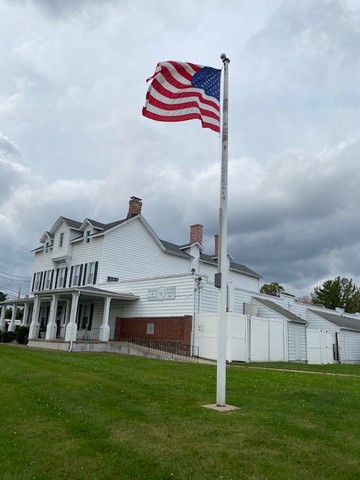
The Catonsville Nine Watching the Flames
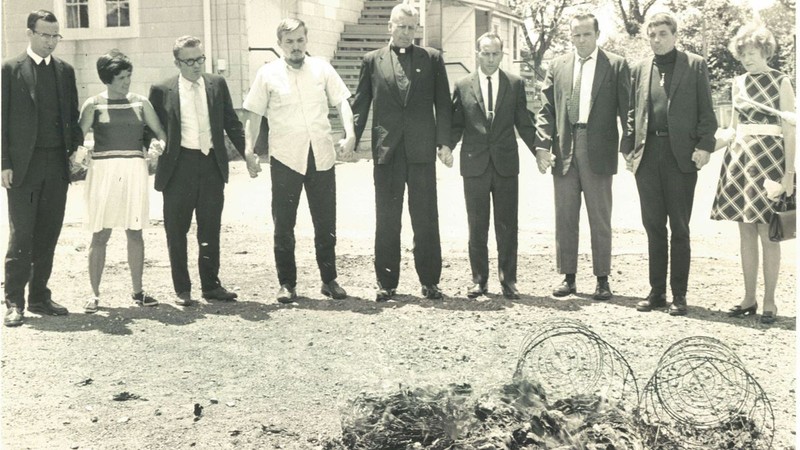
The Catonsville Nine

Knights of Columbus Parking Lot (where the Catonsville Nine burnt the files)
.jpg)
Knights of Columbus Building
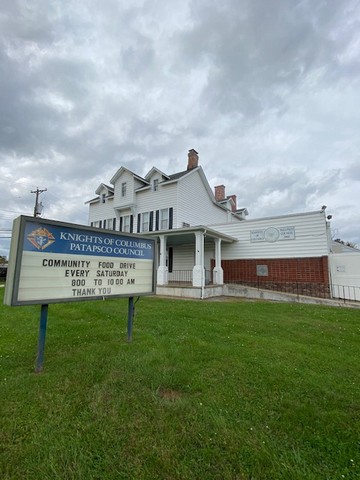
Building Directory Listing Selective Service Board
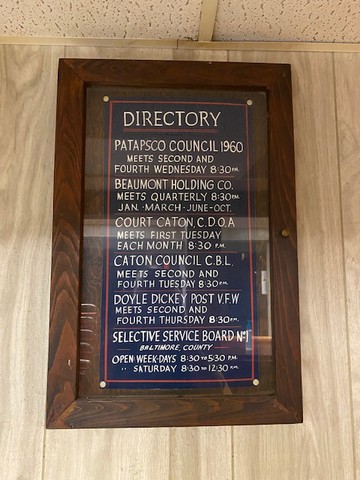
Knights of Colubus Building Sign
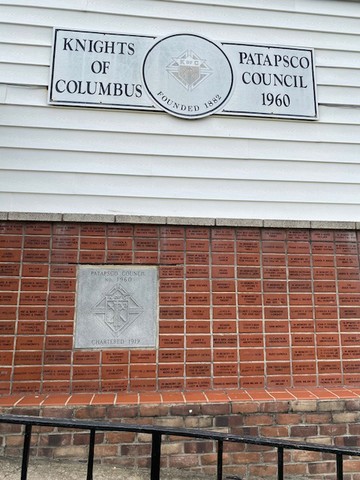
Backstory and Context
Text-to-speech Audio
Introduction
“We say: killing is disorder, life and gentleness and community and unselfishness is the only order we recognize. For the sake of that order, we risk our liberty, our good name.” -Daniel Berrigan, The Trial of the Catonsville Nine.
On May 17, 1968, a group of nine men and women entered the Catonsville Selective Services Office. They seized more than 350 draft files which they removed to the parking lot to burn with a batch of homemade napalm. As the files burned, they linked hands and prayed, and waited to be arrested. Six of them had been or still were affiliates of Catholic religious orders, including Father Daniel Berrigan, a Jesuit priest, and Father Philip Berrigan, a Josephite priest. It was one of the first Vietnam War protests that were not student-led, and the fact that clergy were involved caught the attention of the nation. Their action inspired many similar protests, and their trial attracted enormous attention and crowds of protestors. It also inspired a play, a movie, songs, and multiple documentaries.
Though largely remembered (when remembered at all) as a protest of the Vietnam War, the nine men and women who participated in the Catonsville action were protesting for many reasons. Uniting them all were their feelings on what they saw as the destructive foreign policy of the US; not just in Asia and Vietnam, but in South America (particularly Guatemala, where the Melvilles and Hogan had been previously stationed), and in Africa (where Moylan had worked as a nurse in Uganda). They were also protesting poverty, racism, military interventions, and the funneling of millions of dollars into the military-industrial complex.
The Catonsville Action
On the morning of May 17th, 1968, the Nine met to review their plans and the information that they had on the Knights of Columbus building. They notified hand-picked members of the media and made the drive to Catonsville.
David Darst was stationed outside as a lookout to keep authorities from intervening too early, while the rest of the Nine entered the building in staggered waves. There were three Selective Service clerks working at the time who attempted to stop the activists as they seized the files. The action was supposed to be completely nonviolent, but the clerks resisted more than expected, and there were some minor tussles over the files.
Less than ten minutes later, the activists exited to the parking lot with their spoils. They were joined by Darst, and each of the Nine made sure to participate in either dousing the files with their homemade napalm or lighting the matches to set the blaze. As the reporters filmed, the activists prayed and spoke about what they were doing and why. The shared group statement explained, “We destroy these draft records not only because they exploit our young men, but because those records represent misplaced power, concentrated in the ruling class of America. Their power threatens the peace of the world and is aloof of public dissent and parliamentary process” (The Catonsville Nine, Peters). Daniel Berrigan’s later meditation on their action became the more famous statement, “Our apologies, good friends, for the fracture of good order, the burning of paper instead of children, the angering of the orderlies in the front parlor of the charnel house. We could not, so help us God, do otherwise” (The Trial of the Catonsville Nine, Berrigan). The group then waited around to be arrested. First on the scene was the Baltimore County Police, who were later joined by the FBI. The activists were identified and questioned on-premises, and then taken into custody by the police.
Sources
Berrigan, Daniel. The Trial of the Catonsville Nine. Boston: Beacon Press, 1970.
Cyzyk, Skizz, et al. Hit & Stay. Haricot Vert Films, 2013.
Julius, Marilyn. “Fire and Faith.” The Catonsville Nine File, 2005. http://c9.digitalmaryland.org/
Peters, Shawn Francis. The Catonsville Nine: A Story of Faith and Resistance in the Vietnam Era. New York: Oxford University Press, 2012.
Sachs, Lynne. Investigation of a Flame: A Portrait of the Catonsville Nine. Icarus Films, 2001.
Stacy, Jim. “Iterations of Conscience in Performance: the Catonsville Nine, Their Protest, Their Trial, and Their Docudramas.” Theatre Symposium, vol. 14, 2006, pp. 90–103.
John Caughey, Oct 2020
The Baltimore Sun
Baltimore County Public Library-Catonsville Branch
John Caughey, Oct 2020
John Caughey, Oct 2020
John Caughey, Oct 2020
John Caughey, Oct 2020
